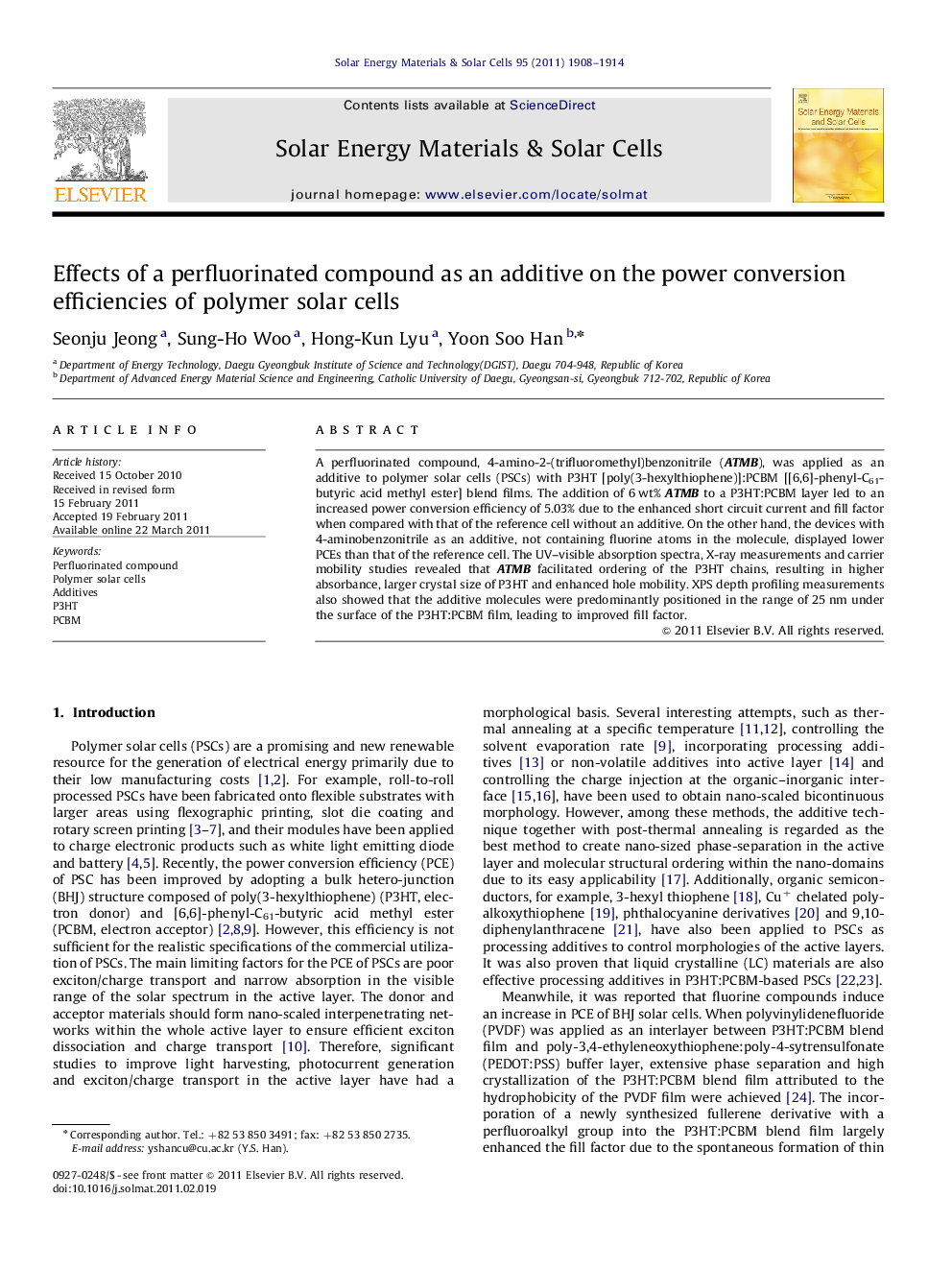| Article ID | Journal | Published Year | Pages | File Type |
|---|---|---|---|---|
| 78869 | Solar Energy Materials and Solar Cells | 2011 | 7 Pages |
A perfluorinated compound, 4-amino-2-(trifluoromethyl)benzonitrile (ATMB), was applied as an additive to polymer solar cells (PSCs) with P3HT [poly(3-hexylthiophene)]:PCBM [[6,6]-phenyl-C61-butyric acid methyl ester] blend films. The addition of 6 wt% ATMB to a P3HT:PCBM layer led to an increased power conversion efficiency of 5.03% due to the enhanced short circuit current and fill factor when compared with that of the reference cell without an additive. On the other hand, the devices with 4-aminobenzonitrile as an additive, not containing fluorine atoms in the molecule, displayed lower PCEs than that of the reference cell. The UV–visible absorption spectra, X-ray measurements and carrier mobility studies revealed that ATMB facilitated ordering of the P3HT chains, resulting in higher absorbance, larger crystal size of P3HT and enhanced hole mobility. XPS depth profiling measurements also showed that the additive molecules were predominantly positioned in the range of 25 nm under the surface of the P3HT:PCBM film, leading to improved fill factor.
Graphical abstractBy incorporating a small amount of perfluorinated compound, ATMB, into the P3HT:PCBM blend film, a power conversion efficiency of 5.03% was obtained.Figure optionsDownload full-size imageDownload as PowerPoint slideHighlights► Enhanced performance of polymer solar cell was achieved by introduction of an additive. ► The additive with fluorine atoms facilitated ordering of the P3HT chains during thermal annealing. ► The additive also led to segregation of the active layer into two parts.
